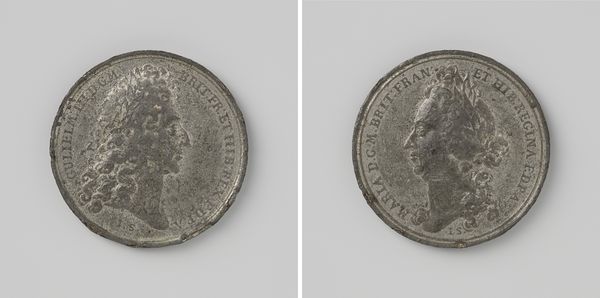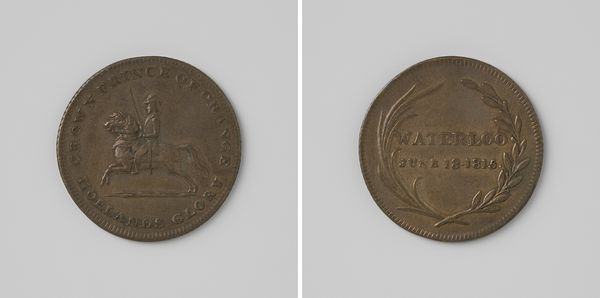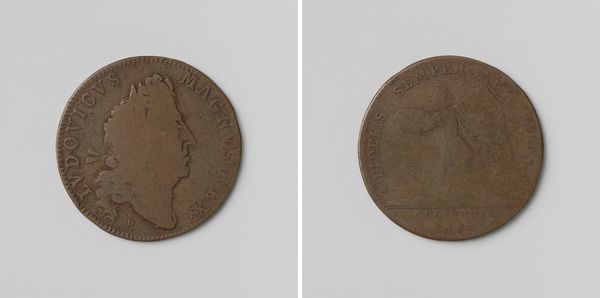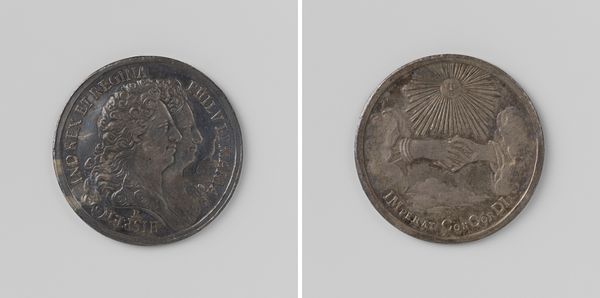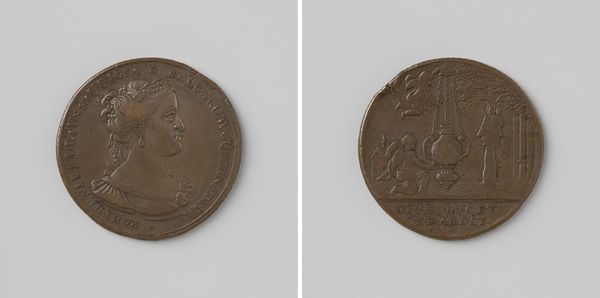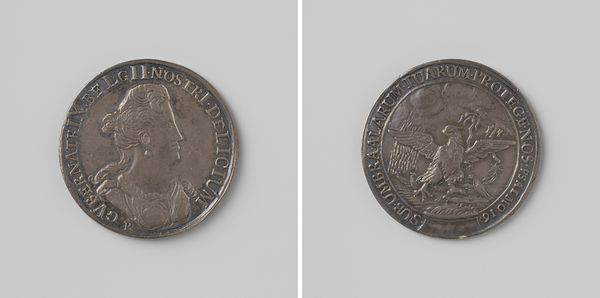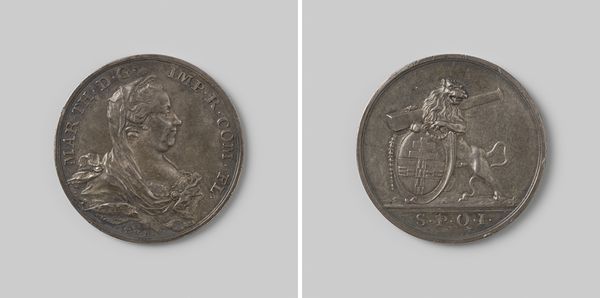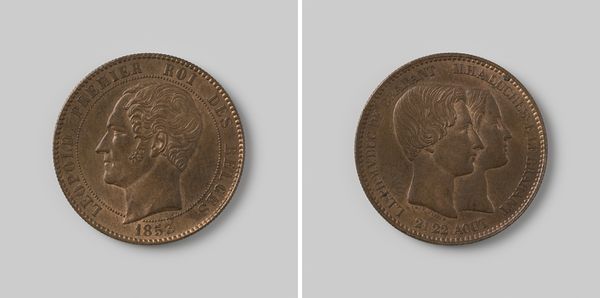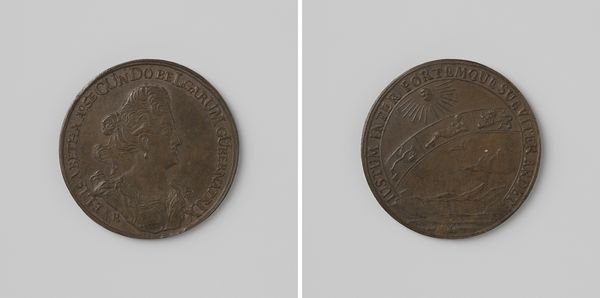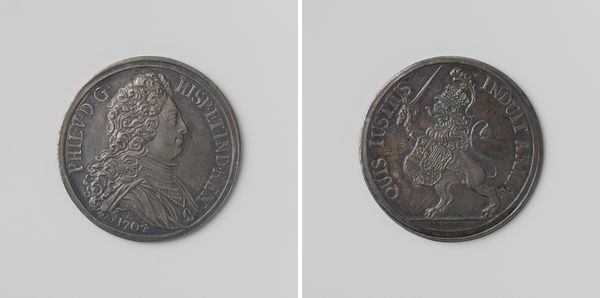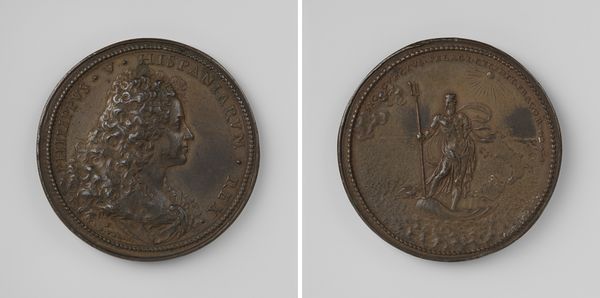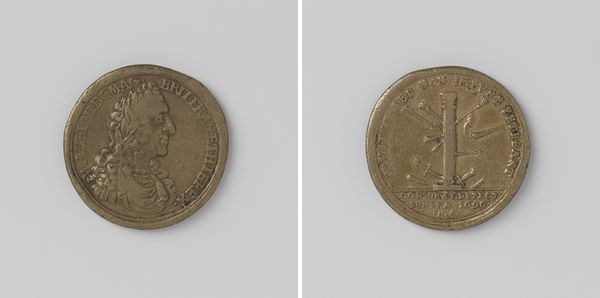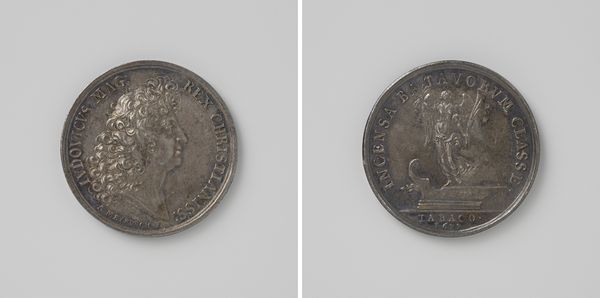
Maria Elisabeth van Oostenrijk, ingehuldigd als landvoogdes der zuidelijke Nederlanden 1726
0:00
0:00
metal, sculpture
#
portrait
#
medal
#
baroque
#
metal
#
sculpture
Dimensions: diameter 3.4 cm, weight 13.41 gr
Copyright: Rijks Museum: Open Domain
Curator: At first glance, there's a quiet stoicism to this medal, an artifact created in 1726 by Philippe Roëttiers commemorating Maria Elisabeth of Austria's inauguration as Governor of the Southern Netherlands. Editor: It's intriguing. I immediately think about what it must have meant for her to wield power in that specific time and place. Curator: Exactly. This medal speaks to the complexities of female leadership within patriarchal structures. Maria Elisabeth navigated a landscape rife with political intrigue and expectations tied to her gender. She’s portrayed here, yes, in a manner befitting a Baroque portrait, but let’s consider the gaze, the slight downturn of the mouth... It feels weighted. Editor: The composition is deliberately simple, though. It's divided between the profile and that potent symbol of power, the eagle. The choice of metal—probably bronze or a similar alloy—gives it an earthly gravitas, grounding her authority, if you will, in tangible form. But do you think that imagery supports your ideas on patriarchy? Curator: I would propose that the image of an eagle, often associated with masculine power, cleverly aligns her role with the prevailing order while she navigated very turbulent social dynamics. The very Latin inscription is another symbol—these visual cues broadcast legitimacy. Editor: Semiotics. But also… craftsmanship. The subtle rendering of her features, the sharpness of the eagle’s talons, this represents Baroque aesthetics at its peak, doesn't it? It’s quite beautiful. It is also such a fascinating testament to her political savvy, if we think about how carefully these images and pronouncements are constructed to maintain, reflect, and disseminate a desired image. Curator: Precisely, to use it today in education, especially gender studies, reveals how gender, class, and power intertwine. Maria Elisabeth leveraged visibility to promote political policies at home and abroad in service of a stronger Austrian Empire. Editor: Indeed. There's an incredible depth within this little artwork; now when people look at it, hopefully they might have a lot more to reflect on.
Comments
No comments
Be the first to comment and join the conversation on the ultimate creative platform.
